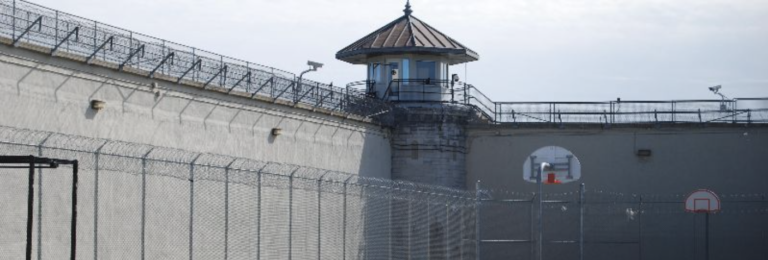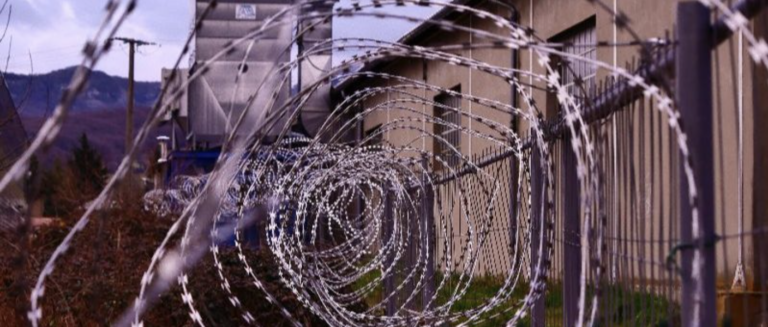How Racism Affects Mental Health, Policing, and Incarceration

In October 2016, a resident in New York City (NYC) called 911 stating that their neighbor, Ms. Deborah Danner, was acting “erratic”, by yelling and screaming. The NY Police Department sent over an officer, Hugh Barry, who entered Ms. Danner’s house. She brandished some scissors, dropped them, and picked up a bat. Allegedly, she swung this bat at Barry. In response, Barry fired his gun at her twice and killed her. In the aftermath of the shooting, the NY Police Commissioner asked whether Barry had followed the protocol for responding to someone with known mental health challenges – and questioned why he used his gun instead of his taser. In December 2018, NYC paid a $2 million settlement to Ms. Danner’s family.
Ms. Danner had a diagnosis of schizophrenia. She was also Black. Her story, one of too many, reflects how the intersection between racism, mental illness, and the police system can lead to lethal consequences.
While all people with mental health conditions are at increased risk of police encounters and incarceration, there are marked disparities in the way the police system treats Black and white Americans with mental health challenges:
- Black people are less likely to be granted pretrial diversion (i.e., the opportunity to go to treatment instead of jail or prison) than white individuals with similar legal histories (5).
- Police are more likely to use lethal force against Black people showing signs of mental health problems as compared to white people with similar presentations (6).
- Once incarcerated, Black Americans are not screened as often as white individuals for mental health conditions (2). Moreover, the questionnaires used to assess for mental health conditions are racially biased and likely underestimate how common mental health conditions are in Black communities (4).
- Black individuals in jail or prison are 43% less likely than white individuals to receive mental health services and 2.5 times more likely to be placed in solitary confinement (2).
Police encounters, arrests, and incarceration have sweeping and harmful effects on relationships, the ability of families to stay together, and housing and employment stability. Moreover, one widely publicized study showed that police shootings of unarmed Black men have long-term impacts on the mental health of Black Americans, but do not impact the mental health of white Americans (1). Thus, police shootings also cause collective trauma in Black communities.
There are no easy solutions to the disproportionate involvement of the police in the lives of Black Americans with mental health conditions, given that this results from historical and ongoing systemic racism. One crucial piece of the solution, however, is to address racial inequities in mental healthcare, given that this is an additional risk factor for the involvement of Black people with the police. Unfortunately, Black Americans encounter more barriers to accessing mental healthcare than their white counterparts, and receive poorer quality treatment when they do get care (3).

“There are no easy solutions to the disproportionate involvement of the police in the lives of Black Americans with mental health conditions…One crucial piece of the solution, however, is to address racial inequities in mental healthcare…”
The US is currently reckoning with the racist roots of our police, jail, and prison systems, which may eventually lead to reforms in how police force is used against Black people with mental health conditions. However, this process will happen slowly. In the meantime, as mental health professionals and advocates, we must do all we can to reduce racial disparities in police involvement by improving access to and quality of mental health care for Black Americans.

Arundati Nagendra, PhD
Research Fellow, MGH COE
References
- Bor, J., Venkataramani, A. S., Williams, D. R., & Tsai, A. C. (2018). Police killings and their spillover effects on the mental health of black Americans: a population-based, quasi-experimental study. The Lancet, 392(10144), 302–310. https://doi.org/10.1016/S0140-6736(18)31130-9.
- Kaba, F., Solimo, A., Graves, J., Glowa-Kollisch, S., Vise, A., MacDonald, R., Waters, A., Rosner, Z., Dickey, N., Angell, S., & Venters, H. (2015). Disparities in mental health referral and diagnosis in the New York city jail mental health service. American Journal of Public Health, 105(9), 1911–1916. https://doi.org/10.2105/AJPH.2015.302699.
- Maura, J., & Weisman de Mamani, A. (2017). Mental health disparities, treatment engagement, and attrition among racial/ethnic minorities with severe mental illness: A review. Journal of Clinical Psychology in Medical Settings, 24(3–4), 187–210. https://doi.org/10.1007/s10880-017-9510-2.
- Prins, S. J., Osher, F. C., Steadman, H. J., Robbins, P. C., & Case, B. (2019). Exploring racial disparities in the Brief Jail Mental Health Screen. Physiology & Behavior, 176(3), 139–148. https://doi.org/10.1177/0093854811435776.
- Schlesinger, T. (2013). Racial disparities in pretrial diversion. Race and Justice, 3(3), 210–238. https://doi.org/10.1177/2153368713483320.
- Thomas, M. D., Jewell, N. P., & Allen, A. M. (2021). Black and unarmed: statistical interaction between age, perceived mental illness, and geographic region among males fatally shot by police using case-only design. Annals of Epidemiology, 53, 42-49.e3. https://doi.org/10.1016/j.annepidem.2020.08.014.